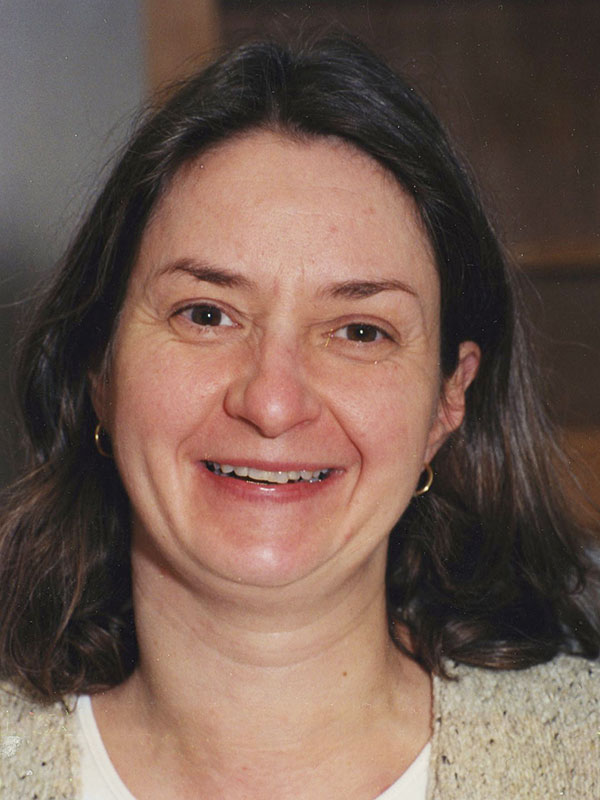
Heather Owen
Education
- Postdoctoral Fellow, Miami University, 1988-1994
- PhD, Miami University, 1988
- MS, Miami University, 1983
- BS, University of Akron, 1979
Research Interests
Although I began my research career studying the ultrastructure of lower land plants and algae, my main area of research for the past several years has been on pollen development in the higher plant Arabidopsis thaliana. This small weed has been referred to as the Drosophila of the plant world because its small genome size and rapid generation time make it ideally suited for genetic study. Several methods of mutagenesis have been developed for this species. In my laboratory I study male-sterile Arabidopsis lines that have been generated by one of these methods, T-DNA insertion mutagenesis.
Using a combination of electron, brightfield and fluorescence microscopy we describe how pollen development is altered in individual mutant lines. Then, since the mutant gene in each line has been simultaneously tagged and inactivated by the presence of the T-DNA, we use the presence of the T-DNA to isolate the gene that has been interrupted in each line using recombinant DNA techniques. Isolation and subsequent characterization of genes involved in various stages of pollen development will ultimately lead to a better understanding of this economically important developmental process in plants.
I also manage the electron microscope laboratory and teach formal courses that provide hands-on training in the use of the equipment for both undergraduate and graduate students.
Selected Publications
Renzaglia, K.S., Lopez, R.A., Welsh, R.D., Owen, H.A. and Merced, A. 2020. Callose in sporogenesis: Novel composition of the inner spore wall in hornworts. Plant Systematics and Evolution 306, 16.
Dobritsa, A.A., Kirkpatrick, A.B., Reeder, S.H., Li, P. and Owen, H.A. 2018. Pollen aperture factor INP1 acts late in aperture formation by excluding specific membrane domains from exine deposition. Plant Physiology 176,326-339.
Edlund, A.F., Olsen, K., Mendoza, C., Wang, J., Buckley, T., Nguyen, M., Callahan, B., and Owen, H.A. 2017. Pollen wall degradation in the Brassicaceae permits cell emergence after pollination. American Journal of Botany104,1266-1273.
Baghaie, A., Tafti, A.P., Owen, H.A., D'Souza, R.M. and Yu, Z. 2017. Three-dimensional reconstruction of highly complex microscopic samples using scanning electron microscopy and optical flow estimation. PLOS One 12(4) doi:http://dx.doi.org/10.1371/journal.pone.0175078.
Holdorf, M.M., Owen, H.A., Lieber, S.R., Yuan, L., Adams, N., Dabney-Smith, C. and Makaroff, C.A. 2012. Arabidopsis ETHE1 encodes a sulfur dioxygenase that is essential for embryo and endosperm development. Plant Physiology 160,226-236.
Boateng, K.A., Yang, X., Dong, F., Owen, H.A. and Makaroff, C.A. 2008. SWI1 is required for meiotic chromosome remodeling events. Molecular Plant 1,620-633.
Paxson-Sowders, D.M., Dodrill, C.H., Owen, H.A. and Makaroff, C.A. 2001. DEX1, a novel plant protein, is required for exine pattern formation during pollen development in Arabidopsis. Plant Physiology 127,1739-1749.
Maiti, M.K., Krishnasamy, S.K., Owen, H.A. and Makaroff, C.A. 1997. Molecular characterization of glyoxalase II from Arabidopsis thaliana. Plant Molecular Biology 35,471-481.
Paxson-Sowders, D.M., Owen, H.A. and Makaroff, C.A. 1997. A comparative ultrastructural analysis of exine pattern development in wild-type Arabidopsis and a mutant defective in pattern formation. Protoplasma 198,53-65.
Pierson, B.M., Owen, H.A., Feldman, K.A. and Makaroff, C.A. 1996. Characterization of three male-sterile mutants of Arabidopsis thaliana exhibiting alterations in meiosis. Sexual Plant Reproduction 9,1-16.
Owen, H.A. and Makaroff, C.A. 1995. Ultrastructure of microsporogenesis and microgametogenesis in Arabidopsis thaliana (L.) Heynh. ecotype Wassilewskija (Brassicaceae). Protoplasma 185,7-21.